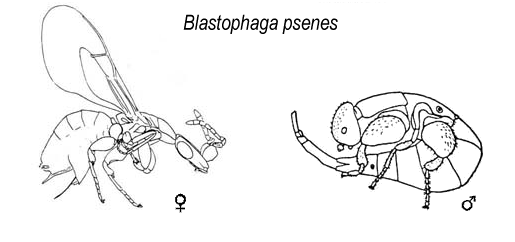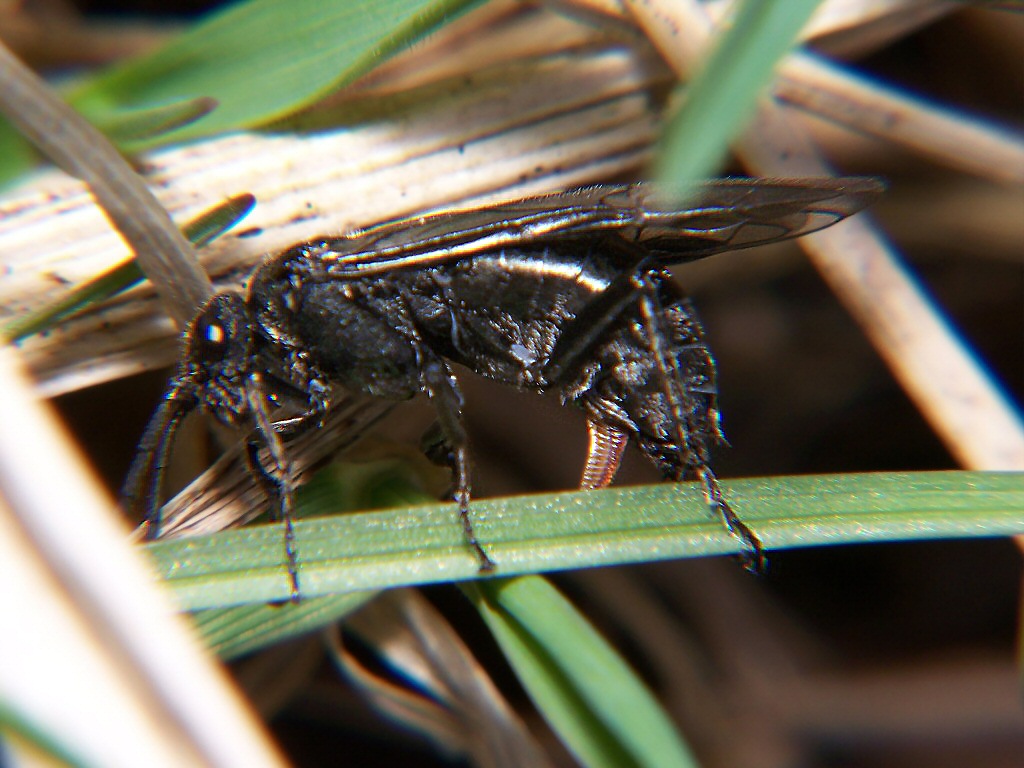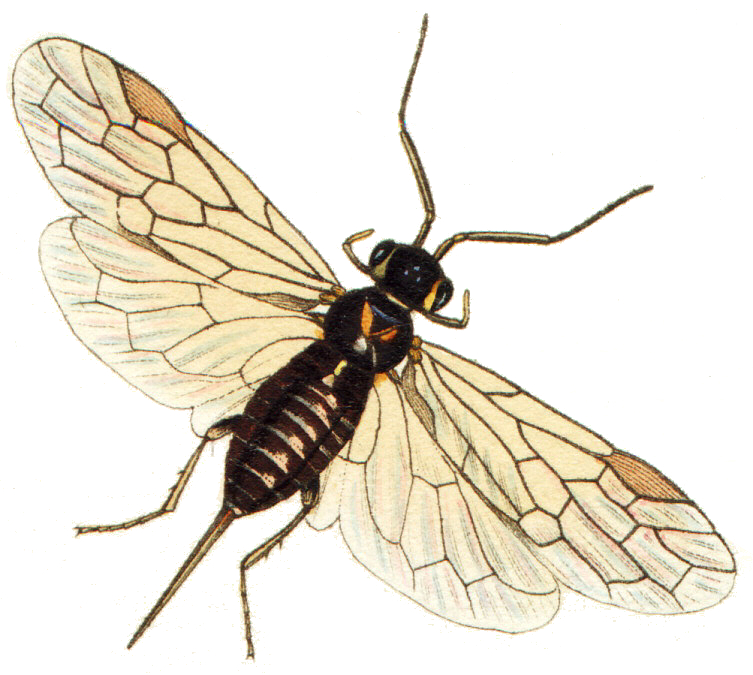|
Oviposition
The ovipositor is a tube-like organ used by some animals, especially insects, for the laying of eggs. In insects, an ovipositor consists of a maximum of three pairs of appendages. The details and morphology of the ovipositor vary, but typically its form is adapted to functions such as preparing a place for the egg, transmitting the egg, and then placing it properly. For most insects, the organ is used merely to attach the egg to some surface, but for many parasitic species (primarily in wasps and other Hymenoptera), it is a piercing organ as well. Some ovipositors only retract partly when not in use, and the basal part that sticks out is known as the scape, or more specifically oviscape, the word ''scape'' deriving from the Latin word , meaning "stalk" or "shaft". In insects Grasshoppers use their ovipositors to force a burrow into the earth to receive the eggs. Cicadas pierce the wood of twigs with their ovipositors to insert the eggs. Sawflies slit the tissues of ... [...More Info...] [...Related Items...] OR: [Wikipedia] [Google] [Baidu] |
Parasite
Parasitism is a Symbiosis, close relationship between species, where one organism, the parasite, lives (at least some of the time) on or inside another organism, the Host (biology), host, causing it some harm, and is Adaptation, adapted structurally to this way of life. The entomologist E. O. Wilson characterised parasites' way of feeding as "predators that eat prey in units of less than one". Parasites include single-celled protozoans such as the agents of malaria, sleeping sickness, and amoebic dysentery; animals such as hookworms, lice, mosquitoes, and vampire bats; fungi such as Armillaria mellea, honey fungus and the agents of ringworm; and plants such as mistletoe, dodder, and the Orobanchaceae, broomrapes. There are six major parasitic Behavioral ecology#Evolutionarily stable strategy, strategies of exploitation of animal hosts, namely parasitic castration, directly transmitted parasitism (by contact), wikt:trophic, trophicallytransmitted parasitism (by being eaten), ... [...More Info...] [...Related Items...] OR: [Wikipedia] [Google] [Baidu] |
Fig Wasp
Fig wasps are wasps of the superfamily Chalcidoidea which spend their larval stage inside fig syconia. Some are pollinators but others simply feed off the plant. The non-pollinators belong to several groups within the superfamily Chalcidoidea, while the pollinators are in the family Agaonidae. Pollinating fig wasps are all gall-makers, while non-pollinating fig wasps either make their own galls or usurp the galls of other fig wasps. The lifestyles of these fig wasps rely on the fruit of fig trees to reproduce, with pollinating fig wasps acting as mutualists, and non-pollinating fig wasps as parasitoids. History Aristotle recorded in his '' History of Animals'' that the fruits of the wild fig (the caprifig) contain ''psenes'' (fig wasps); these begin life as grubs (larvae), and the adult ''psen'' splits its "skin" (pupa) and flies out of the fig to find and enter a cultivated fig, saving it from dropping. He believed that the ''psen'' was generated spontaneously; he did no ... [...More Info...] [...Related Items...] OR: [Wikipedia] [Google] [Baidu] |
Grasshopper
Grasshoppers are a group of insects belonging to the suborder Caelifera. They are amongst what are possibly the most ancient living groups of chewing herbivorous insects, dating back to the early Triassic around 250 million years ago. Grasshoppers are typically ground-dwelling insects with powerful hind legs which allow them to escape from threats by leaping vigorously. Their front legs are shorter and used for grasping food. As hemimetabolous insects, they do not undergo complete metamorphosis; they hatch from an egg into a Nymph (biology), nymph or "hopper" which undergoes five moults, becoming more similar to the adult insect at each developmental stage. The grasshopper hears through the tympanal organ which can be found in the first segment of the abdomen attached to the thorax; while its sense of vision is in the compound eyes, a change in light intensity is perceived in the simple eyes (ocelli). At high population densities and under certain environmental conditions, som ... [...More Info...] [...Related Items...] OR: [Wikipedia] [Google] [Baidu] |
Tephritidae
The Tephritidae are one of two fly families referred to as fruit flies, the other family being the Drosophilidae. The family Tephritidae does not include the biological model organisms of the genus '' Drosophila'' (in the family Drosophilidae), which is often called the "common fruit fly". Nearly 5,000 described species of tephritid fruit fly are categorized in almost 500 genera of the Tephritidae. Description, recategorization, and genetic analyses are constantly changing the taxonomy of this family. To distinguish them from the Drosophilidae, the Tephritidae are sometimes called peacock flies, in reference to their elaborate and colorful markings. The name comes from the Greek τεφρος, ''tephros'', meaning "ash grey". They are found in all the biogeographic realms. Description For terms see Morphology of Diptera anTephritidae glossary Tephritids are small to medium-sized (2.5–10 mm) flies that are often colourful, and usually with pictured wings, the subco ... [...More Info...] [...Related Items...] OR: [Wikipedia] [Google] [Baidu] |
Egg (biology)
An egg is an organic vessel grown by an animal to carry a possibly fertilization, fertilized egg cell (a zygote) and to egg incubation, incubate from it an embryo within the egg until the embryo has become an animal fetus that can survive on its own, at which point the animal hatches. Most arthropods, vertebrates (excluding live-bearing mammals), and Mollusca, mollusks lay eggs, although some, such as scorpions, do not. Reptile eggs, bird eggs, and monotreme eggs are laid out of water and are surrounded by a protective eggshell, shell, either flexible or inflexible. Eggs laid on land or in nests are usually kept within a warm and favorable temperature range while the embryo grows. When the embryo is adequately developed it hatches, i.e., breaks out of the egg's shell. Some embryos have a temporary egg tooth they use to crack, pip, or break the eggshell or covering. The largest recorded egg is from a whale shark and was in size. Whale shark eggs typically hatch within the m ... [...More Info...] [...Related Items...] OR: [Wikipedia] [Google] [Baidu] |
Symphyta
Sawflies are wasp-like insects that are in the suborder Symphyta within the order Hymenoptera, alongside ants, bees, and wasps. The common name comes from the saw-like appearance of the ovipositor, which the females use to cut into the plants where they lay their eggs. The name is associated especially with the Tenthredinoidea, by far the largest Taxonomic rank#Ranks in zoology, superfamily in the suborder, with about 7,000 known species; in the entire suborder, there are 8,000 described species in more than 800 genera. Symphyta is paraphyly, paraphyletic, consisting of several Basal (phylogenetics), basal groups within the order Hymenoptera, each one rooted inside the previous group, ending with the Apocrita which are not sawflies. The primary distinction between sawflies and the Apocrita – the ants, bees, and wasps – is that the adults lack a "wasp waist", and instead have a broad connection between the abdomen and the Thorax (insect anatomy), thorax. Some sawflies are Ba ... [...More Info...] [...Related Items...] OR: [Wikipedia] [Google] [Baidu] |
Stinger
A stinger (or sting) is a sharp organ found in various animals (typically insects and other arthropods) capable of injecting venom, usually by piercing the epidermis of another animal. An insect sting is complicated by its introduction of venom, although not all stings are venomous. Bites, which can introduce saliva as well as additional pathogens and diseases, are often confused with stings, and vice versa. Specific components of venom are believed to give rise to an allergic reaction, which in turn produces skin lesions that may vary from a small itching weal, or slightly elevated area of the skin, to large areas of inflamed skin covered by vesicles and crusted lesions. Stinging insects produce a painful swelling of the skin, the severity of the lesion varying according to the location of the sting, the identity of the insect and the sensitivity of the subject. Many species of bees and wasps have two poison glands, one gland secreting a toxin in which formic acid is ... [...More Info...] [...Related Items...] OR: [Wikipedia] [Google] [Baidu] |
Aculeata
Aculeata is an infraorder of Hymenoptera containing ants, bees, and stinging wasps. The name is a reference to the defining feature of the group, which is the modification of the ovipositor into a stinger. However, many members of the group cannot sting, either retaining the ovipositor, or having lost it altogether. A large part of the clade is parasitic. This group includes all of the eusocial Hymenopterans. The oldest aculeates are known from the Late Jurassic Karabastau Formation of Kazakhstan, represented by the family Bethylonymidae, which may be para- or polyphyletic. Classification The use of the name Aculeata has a long history at the rank of infraorder or division. The Aculeata are a monophyletic, or good natural group, containing all the descendants of a single common ancestor. The Aculeata are therefore maintained as a taxon, either at infraorder or division rank or as an unranked clade In biology, a clade (), also known as a Monophyly, monophyletic group ... [...More Info...] [...Related Items...] OR: [Wikipedia] [Google] [Baidu] |
Venom
Venom or zootoxin is a type of toxin produced by an animal that is actively delivered through a wound by means of a bite, sting, or similar action. The toxin is delivered through a specially evolved ''venom apparatus'', such as fangs or a stinger, in a process called ''envenomation''. Venom is often distinguished from ''poison'', which is a toxin that is passively delivered by being ingested, inhaled, or absorbed through the skin, and ''toxungen'', which is actively transferred to the external surface of another animal via a physical delivery mechanism. Venom has evolved in terrestrial and marine environments and in a wide variety of animals: both predators and prey, and both vertebrates and invertebrates. Venoms kill through the action of at least four major classes of toxin, namely necrosis, necrotoxins and cytotoxins, which kill cells; neurotoxins, which affect nervous systems; myotoxins, which damage muscles; and Hemotoxin, haemotoxins, which disrupt Thrombus, blood clotti ... [...More Info...] [...Related Items...] OR: [Wikipedia] [Google] [Baidu] |
Chrysis Ignita
''Chrysis ignita'' is a species of cuckoo wasp. It is one of a group of species which are difficult to separate and which may be referred to as ruby-tailed wasps. Cuckoo wasps are parasitoids and kleptoparasites, laying their eggs in the nests of other species where their young consume the larvae of their hosts. They have a number of adaptations which have evolved to equip them for their life cycle. They have metallic, armored bodies, and can roll up into balls to protect themselves from harm when infiltrating the nests of their hosts. Unlike most other aculeates, however, cuckoo wasps cannot sting. The hosts of ''Chrysis ignita'' are believed to be potter wasps such as '' Ancistrocerus parietum''. ''Chrysis ignita'' is found across the Palearctic excluding Africa, from western Europe to China and Japan. Taxonomy and phylogeny ''Chrysis ignita'' is a chrysidid wasp with a typical colorful, metallic exoskeleton; the stinger is reduced in size and used as an ovipositor.Agnoli ... [...More Info...] [...Related Items...] OR: [Wikipedia] [Google] [Baidu] |
Gland
A gland is a Cell (biology), cell or an Organ (biology), organ in an animal's body that produces and secretes different substances that the organism needs, either into the bloodstream or into a body cavity or outer surface. A gland may also function to remove unwanted substances such as urine from the body. There are two types of gland, each with a different method of secretion. Endocrine glands are ductless and secrete their products, hormones, directly into interstitial spaces to be taken up into the bloodstream. Exocrine glands secrete their products through a duct into a body cavity or outer surface. Glands are mostly composed of epithelium, epithelial tissue, and typically have a supporting framework of connective tissue, and a capsule. Structure Development Every gland is formed by an ingrowth from an epithelium, epithelial surface. This ingrowth may in the beginning possess a tubular structure, but in other instances glands may start as a solid column of cells which ... [...More Info...] [...Related Items...] OR: [Wikipedia] [Google] [Baidu] |









